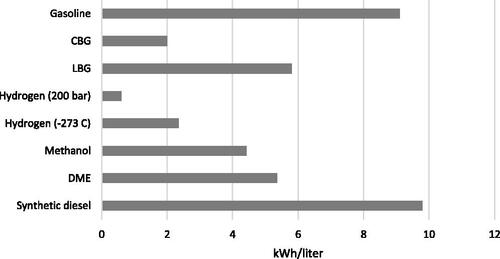Figures & data
Table 1. The search terms used for the bibliometric search.
Figure 1. Biogas can be used to produce several possible fuels, either by upgrading it to a higher methane content, by combusting it to produce electric power, by gasifying it to syngas or by methanotrophy or partial oxidation.
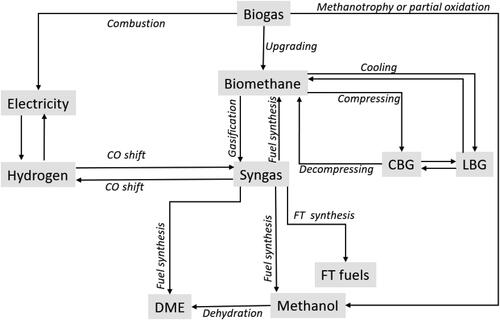
Figure 2. A bibliometric search of journal articles and books indicates an increased interest since the 1970s.
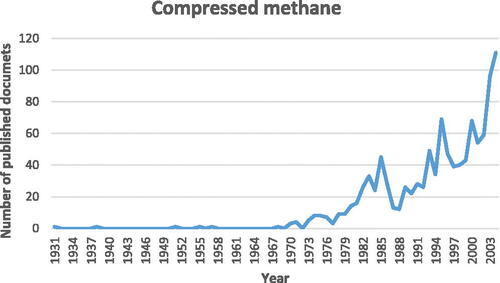
Figure 3. A bibliometric search of journal articles and books indicates that there has been an interest in LNG since the 1960s – especially during the 1970s and 1980s – but that the real growth of interest started in the 2000s.
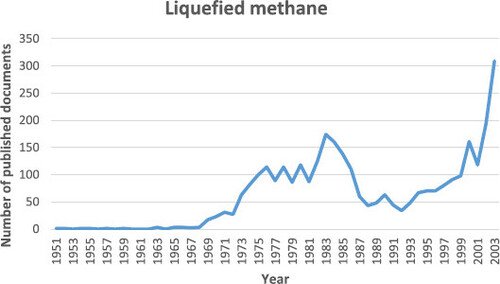
Figure 4. A bibliometric search of journal articles and books indicates that there has been an increased interest in hydrogen since the 1960s, which gained speed after 1973.
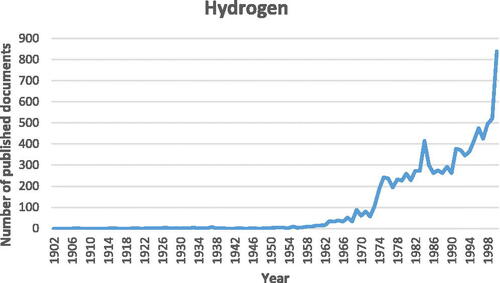
Figure 5. A bibliometric search of journal articles and books indicates that there has been an increased interest in methanol since the first oil crisis in 1973.
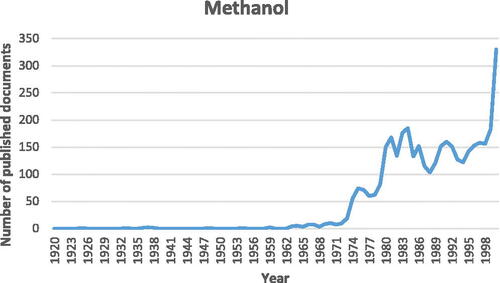
Figure 6. A bibliometric search of journal articles and books indicates that there has been an increased interest in DME since the end of the 1990s.
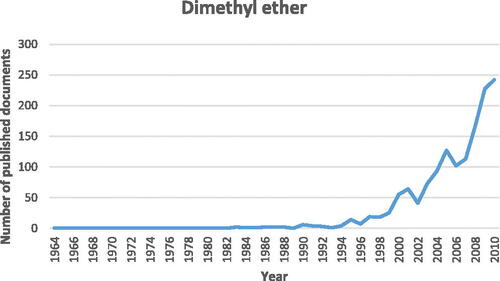
Figure 7. A bibliometric search of journal articles and books indicates that there has been an increased interest in Fischer-Tropsch fuels in the 1980s and from the end of the 1990s.
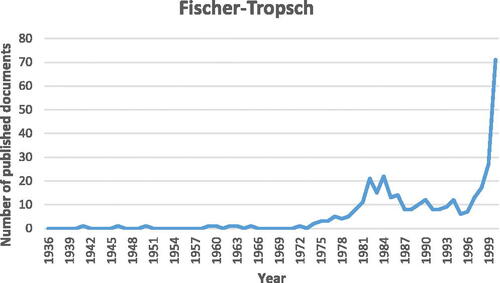
Figure 8. The size of a typical, expected plant, based on Zinoviev et al. [Citation25]. In the study, FT fuels, DME, methanol and hydrogen are all based on the gasification of other kinds of biomass than biogas.
![Figure 8. The size of a typical, expected plant, based on Zinoviev et al. [Citation25]. In the study, FT fuels, DME, methanol and hydrogen are all based on the gasification of other kinds of biomass than biogas.](/cms/asset/30db20a0-d2a9-4764-a9af-3f9e9ba72439/tbfu_a_1821571_f0008_b.jpg)
Figure 9. The primary energy input from the production phase of some of the biogas-based alternatives, based on Ahmadi Moghaddam et al. [Citation9].
![Figure 9. The primary energy input from the production phase of some of the biogas-based alternatives, based on Ahmadi Moghaddam et al. [Citation9].](/cms/asset/678780be-f58f-4d84-a700-172ffb7dda22/tbfu_a_1821571_f0009_b.jpg)
Figure 10. The fuel yield from producing some of the alternatives from biogas, based on Ahmadi Moghaddam et al. [Citation9].
![Figure 10. The fuel yield from producing some of the alternatives from biogas, based on Ahmadi Moghaddam et al. [Citation9].](/cms/asset/9980badd-b124-40a3-9492-b1fdbbf531a4/tbfu_a_1821571_f0010_b.jpg)
Figure 12. The energy yield for fueling a bus with some of the different alternatives at two different distances, based on Ahmadi Moghaddam et al. [Citation9].
![Figure 12. The energy yield for fueling a bus with some of the different alternatives at two different distances, based on Ahmadi Moghaddam et al. [Citation9].](/cms/asset/520b4bf0-12d4-4760-a08b-31babb76468a/tbfu_a_1821571_f0012_c.jpg)

